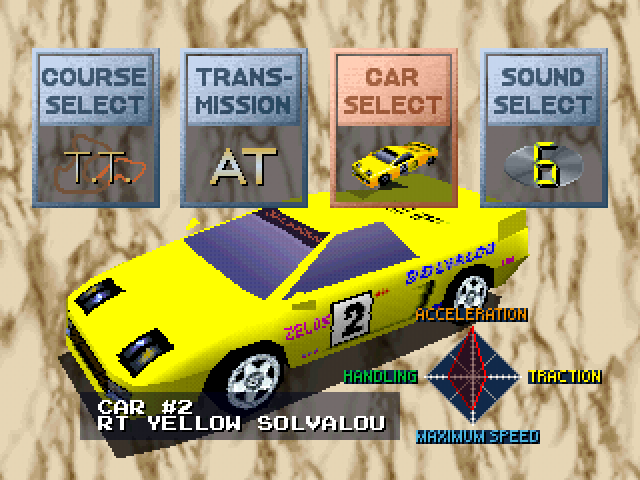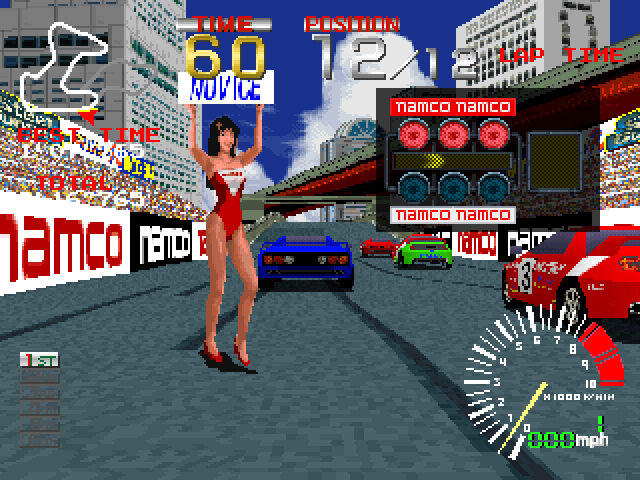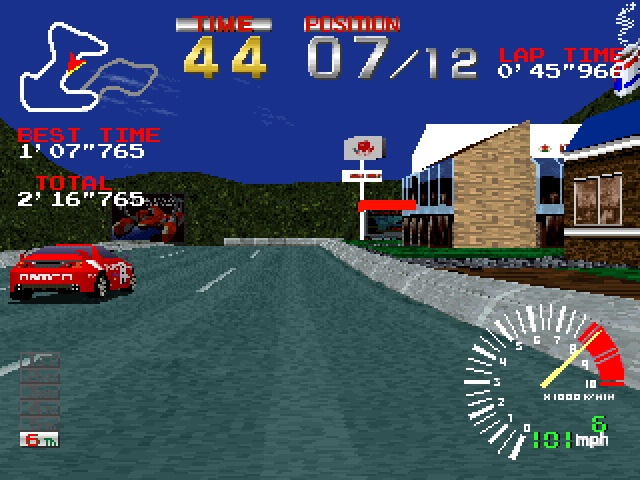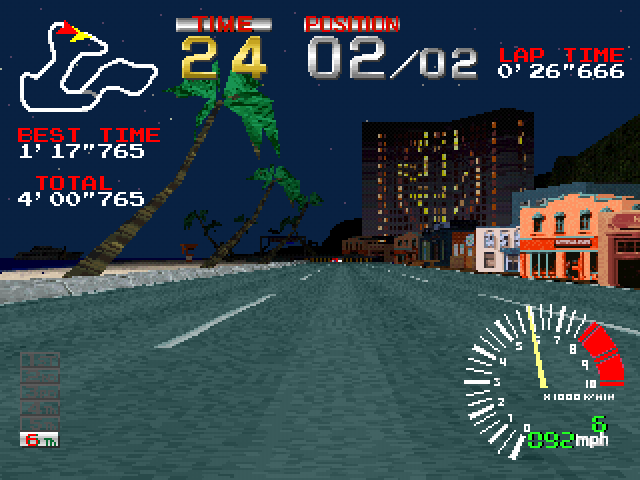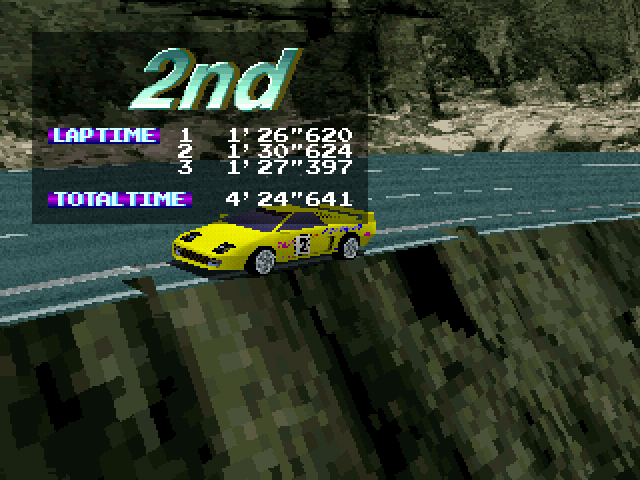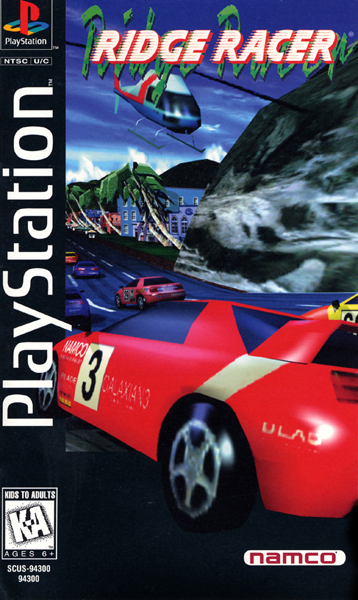Ridge Racer
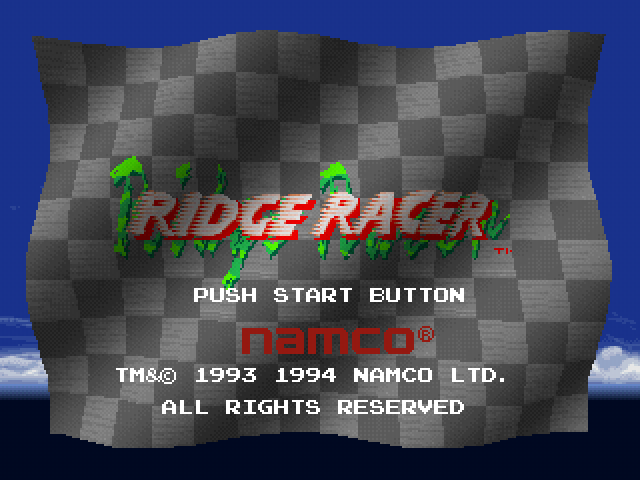
| Rating | |
|---|---|
| Graphics: | 3 |
| Sound: | 4 |
| Control: | 4 |
| Depth: | 3 |
| Overall: | 4 |
Ridge Racer
By: Namco
Released: 1994
I remember trying Ridge Racer at a friend of a friend’s apartment. He was the type of gamer who always had to have the latest and greatest and went for quality over quantity. For example, he had a Neo-Geo console and one game for it (Samurai Shodown II, natch). He had acquired an import PlayStation and showed us Motortoon Grand Prix, Raiden Project and Ridge Racer. The new system was cool to see, but it seemed like quite a bit of money to put down to play cutting edge stuff.
Fast forward a year, and I am visiting another friend’s house. He has a U.S. PlayStation with Ridge Racer attached to a little 9” color TV. I spent time with the game, soon losing track of the time as I got the hang of drifting, unlocking the “extra game” reverse track and failing to beat the elusive black car in the time trial. I was hooked.
It’s a very simple racing game by today’s standards, one that would be laughed at even as a cheap download-only title. The courses consist of one and a half tracks you can race forwards, and later backwards. The seemingly impressive selection of thirteen cars is really just three different pallette-swapped models with different stats. And... it’s just an arcade game, one that you easily beat in an hour or two.
Yet, for its time, it was clearly state of the art. It blew away Sega’s offerings on the Saturn and 32X, and to the untrained eye, you could have the actual arcade Ridge Racer in your home, even if it was a bit blocky and low-res.
So... now that even a lackluster racing game will have dual analog controls, enough licensed cars to fill a dealership, physics models a few shades less realistic than a full simulation and real-time graphics that put the best PlayStation pre-rendered cut scenes to shame, how does Ridge Racer hold up today? Surprisingly well. It helps that the game has personality to spare.
It starts with the round of Galaxian during the load screen. What seems to be a simple flourish is actually the way to unlock eight additional cars. And many of the cars themselves, while simple in design, are named after and decorated with classic Namco games or characters. The upbeat techno music is infectious, from the peppy “Rare Hero” to the absurd “Rotterdam Nation.” Perhaps the hammy and overly enthusiastic announcer brings too much to the proceedings. Lines like, “Woah, that was a great counter! You must be one genius of a driver! You’ve gotta teach me!” are up there with Resident Evil’s “master of unlocking” in the pantheon of cheesiest PlayStation dialogue of all time.
Yet any cheesiness is balanced out with simple yet surprisingly effective controls. With essentially four buttons (left, right, gas and brake), you not only control your car’s steering and speed, but also through various combinations can initiate different power slides, that are the key to negotiating the sharper corners and winning races. The cars all handle a little differently. Where one vehicle may benefit from letting off the gas while steering into the turn, then hitting the gas again, another may need the brakes tapped into the turn to initiate the ideal drift. In a sense similar to Street Fighter II, the controls are quite simple—mastery of the game is all about timing.
Sadly, the Ridge Racer series has lost its luster over the years, as new consoles seem to get new iterations of the series at launch, recycled from bits of past games. Worse yet, to many it’s mainly remembered through Kaz Hirai’s blunder from the reveal of the PS3 at E3. None of this can take away from its impact in 1994 and ‘95, or the fact that Ridge Racer is still fun to play today.
-Ben Langberg
